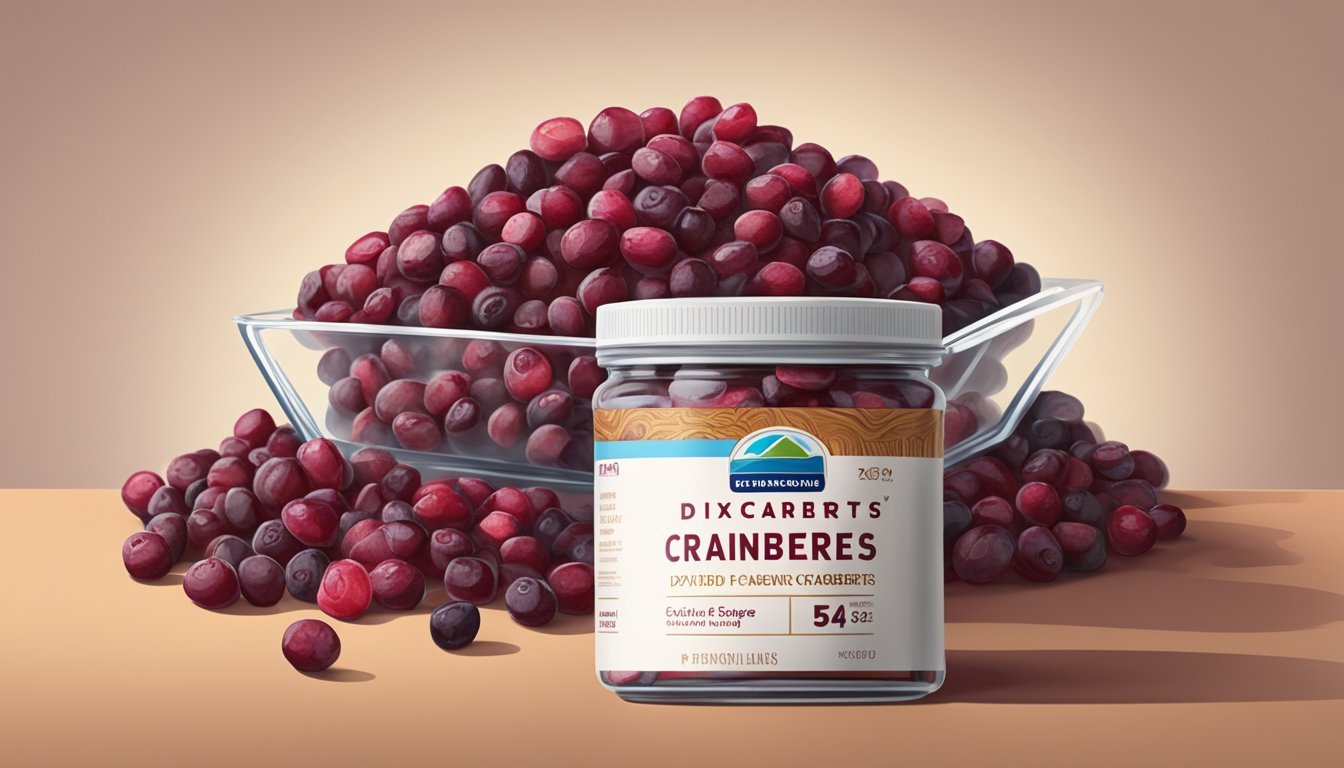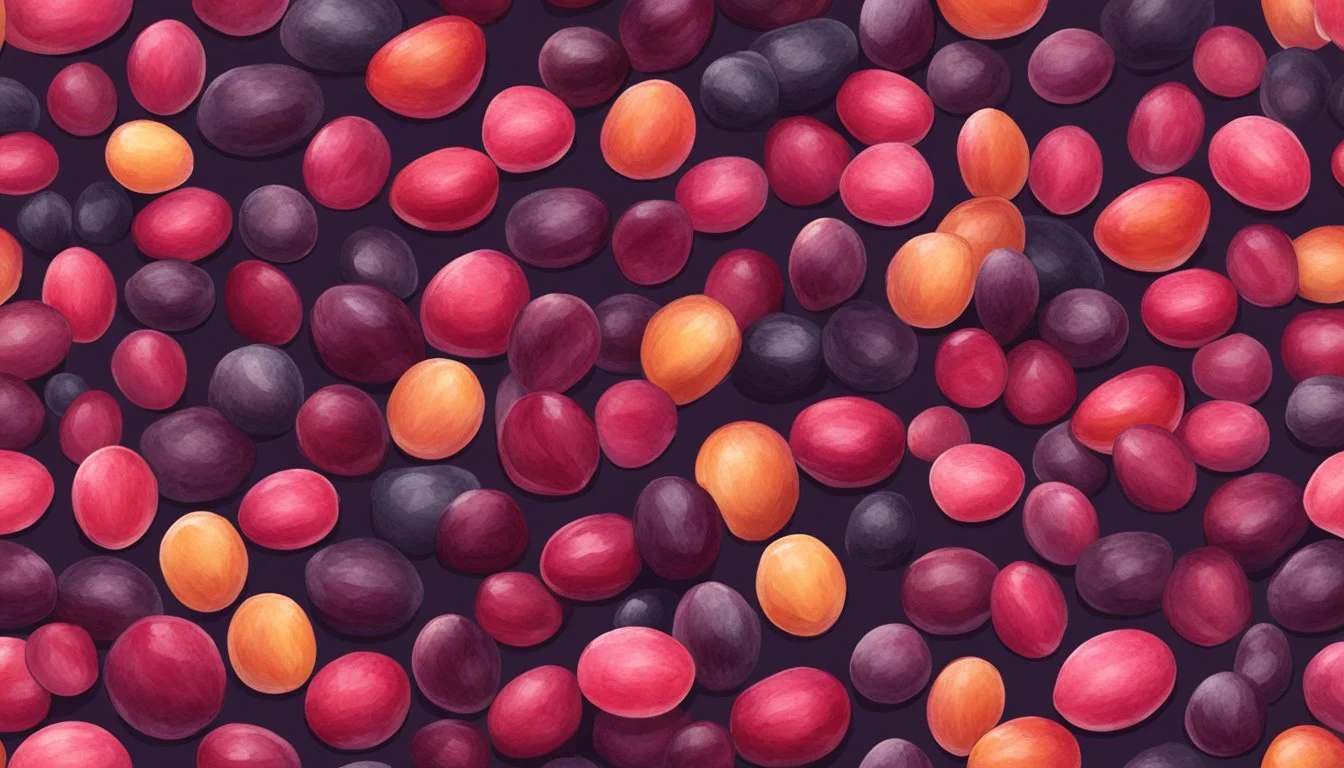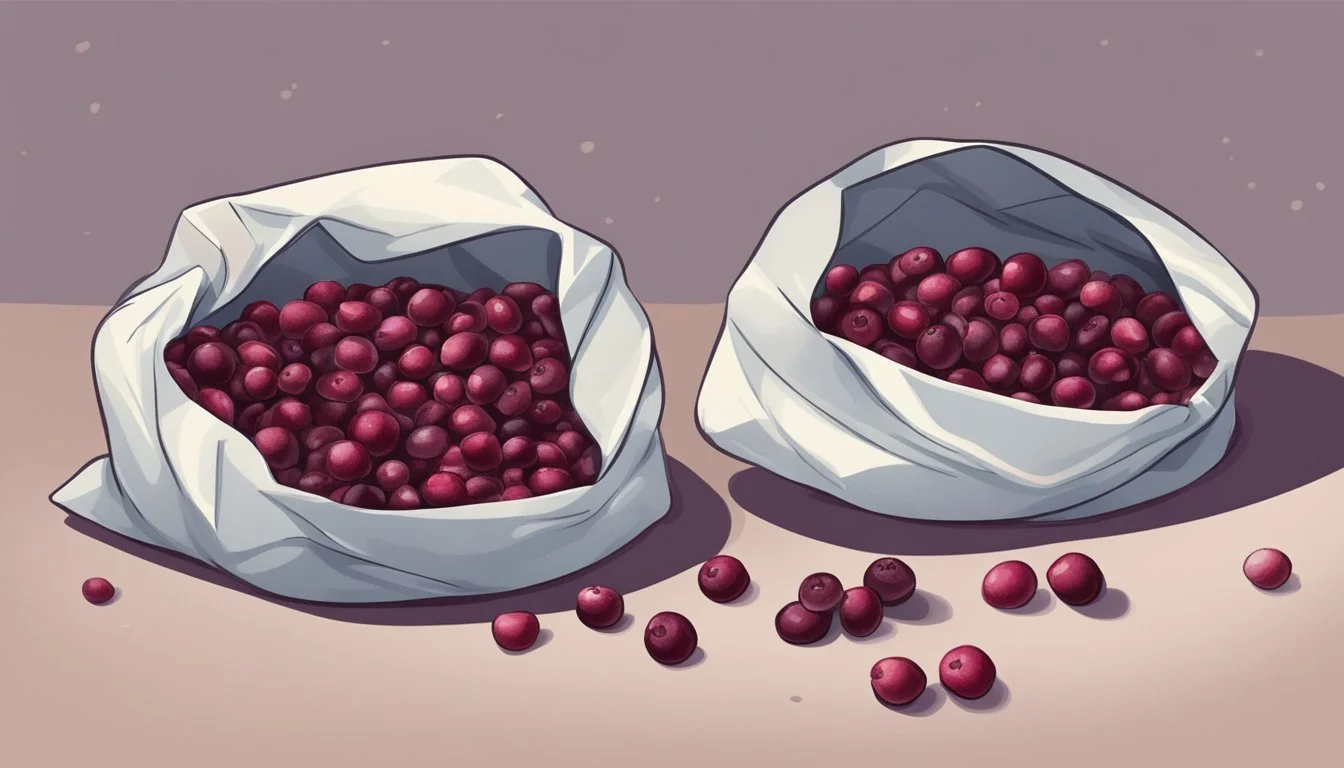Is it Safe to Eat Expired Dried Cranberries?
Understanding Food Safety Dates
When it comes to dried cranberries, consumers often wonder about their shelf life and safety after the printed expiration date. Dried cranberries are a popular snack and recipe ingredient known for their sweet-tart flavor and health benefits. Like many dried fruits, they have a long shelf life due to the removal of water that slows down the spoilage process. However, even these shelf-stable treats have best before dates, leading to questions about their edibility post-expiry.
The safety of consuming expired dried cranberries largely depends on how they have been stored. If they have been kept in a cool, dry place and their packaging is intact, they can last beyond their best before date. Typically, the quality of dried cranberries starts to decline after 12 to 18 months, which is evident in changes to their flavor, texture, and nutritional value. It's essential to inspect these dried fruits for any signs of spoilage, like an off smell, discoloration, or the presence of mold before consumption.
Consumers should exercise their judgment when deciding whether to eat dried cranberries that have surpassed their expiration date. Assessing their current state can ensure that one enjoys dried cranberries without compromising safety or taste. While the best before date serves as a guideline for optimum quality, understanding the indicators of spoilage is key to making an informed decision.
Understanding Expiration Dates
When discussing the shelf life of dried cranberries, it is crucial to differentiate between the terms "expiration date" and "best by date," as they guide consumers on food quality and safety.
Expiration Date vs. Best By Date
Expiration Date: This is the date after which a product is not expected to be at its peak quality, as determined by the manufacturer. It is often confused with a product becoming unsafe, but this is not always the case, especially with non-perishable items like dried cranberries.
Best By Date: Serves as the manufacturer's estimate of when the product will no longer be at its best quality. It is not a safety-related date. The product may still be safe to consume after the best by date but could exhibit signs of age such as flavor loss, textural changes, or decreased nutritional value.
Food Safety Guidelines
When evaluating whether dried cranberries are safe to eat past their labeled dates, consumers should adhere to food safety guidelines based on sensory evaluation.
Visual and Olfactory Inspection:
Appearance: Check for any unusual color changes or the presence of mold. Mold growth indicates spoilage and the dried cranberries should not be consumed.
Smell: A change in odor is an indication that the dried cranberries may not be safe to eat.
Storage Conditions impact the longevity and safety of dried cranberries:
At Room Temperature: Typically, dried cranberries can last between 6 to 12 months.
Refrigerated: The shelf life can extend beyond 12 months and up to 2 years if they are properly sealed and protected from moisture.
Frozen: If consistently kept at 0°F, dried cranberries can remain safe to consume indefinitely, though quality may decline over time.
It's imperative to note that when safety procedures are followed, the risk of consuming harmful dried cranberries is minimal.
Characteristics of Dried Cranberries
When discussing dried cranberries, one must consider both the quality indicators and shelf life factors that influence their edibility and nutritional value.
Quality Indicators
Dried cranberries should be assessed on several fronts to determine their quality. The texture of high-quality dried cranberries typically should be chewy, not tough or overly hard. In terms of color, they should retain their characteristic bold red hue; any darkening may indicate the product is past its prime. Flavor, too, is a critical quality indicator. Dried cranberries should have a balance between sweetness and tartness. Any diminished flavor or off-taste can suggest degradation.
Texture: Chewy but not tough
Color: Bold red, darkening suggests aging
Flavor: Balance of sweetness and tartness
Shelf Life Factors
The shelf life of dried cranberries is influenced by how they are stored. Properly sealed and kept in a cool, dry place, dried cranberries can last between 6 to 12 months at room temperature. Exposure to high temperatures, moisture, or light can accelerate the degradation process, impacting not only the quality but also the nutritional value, as some vitamins are sensitive to these conditions.
Storage: Airtight container, cool and dry location
Expectancy: 6 to 12 months at room temperature
Degradation: Influenced by heat, light, and moisture
Proper Storage Methods
Proper storage methods for dried cranberries are crucial in extending their shelf life and maintaining their quality. These techniques primarily revolve around controlling environmental factors such as air exposure, temperature, humidity, and light.
Effective Sealing
For optimal freshness, dried cranberries should be stored in airtight containers to prevent moisture from spoiling the fruit. Options include:
Resealable plastic bags, with excess air pressed out before sealing.
Glass or plastic containers with tight-fitting lids.
Temperature and Humidity Control
Maintaining the right temperature and humidity ensures that dried cranberries retain their desirable taste and texture:
Pantry: A cool, dry place is suitable for short-term storage, typically between 6-12 months.
Refrigerator: For long-term storage up to 1-2 years, keeping cranberries in the refrigerator can extend their freshness.
Freezer: Dried cranberries can be stored in the freezer, further preserving them beyond 18 months.
Light Exposure
Dried cranberries should be shielded from direct sunlight which can degrade their quality. This necessitates:
Storing in a dark cupboard or pantry.
Using opaque containers if available, or placing them in a location that does not receive direct light.
Identifying Spoilage
When assessing dried cranberries for safe consumption, specific spoilage indicators are critical. These include alterations in appearance, texture, and smell, which can all signal that the dried cranberries are no longer suitable for eating.
Visual and Texture Changes
Visual changes in dried cranberries, such as a darkening of color, can be a sign of spoilage. Good quality dried cranberries typically have a vibrant, dark red hue. If they appear discolored or have taken on a darker, brownish tone, this may be an indicator that they have gone bad. Additionally, the texture can be telling; dried cranberries should be slightly chewy. If they become hard or excessively tough, this change in texture suggests they are past their best quality.
Smell and Taste Alterations
The sense of smell is a reliable tool for identifying spoiled dried cranberries. An off smell or the presence of mildew or mold is a clear indicator that the cranberries should not be consumed. Furthermore, a loss of flavor or an alteration in taste, such as a lack of the characteristic tangy sweetness, signifies that the dried cranberries have likely degraded and should be discarded.
Health and Nutritional Value
Dried cranberries bring a wealth of nutrients to the table that may contribute to overall health, though they should be consumed in moderation due to sugar content.
Cranberry Nutrients
Dried cranberries are known for their considerable amounts of fiber and antioxidants. They often contain added sugars, but their nutritional profile still includes essential vitamins like Vitamin C. A typical 1/4 cup serving of sweetened dried cranberries might contain approximately:
Calories: 123
Fiber: 2 grams (8% Daily Value)
Sugars: 29 grams
Vitamin C: Varies depending on the product
Carbohydrates: 33 grams
Notably, unsweetened dried cranberries will have different nutritional values, often lower in sugar and calories.
Health Benefits and Risks
The high antioxidant content in dried cranberries can offer various health benefits. Antioxidants help the body mitigate damage from free radicals, potentially reducing the risk of chronic diseases. Fiber supports digestive health and can aid in maintaining a healthy heart by helping to lower cholesterol levels.
However, the health risks primarily come from the high sugar content in sweetened dried cranberries, which can lead to increased calorie intake and potential weight gain. Additionally, overconsumption could adversely affect blood sugar levels, particularly for those with diabetes. Consumers should also be aware of the potential for nutrient degradation if cranberries are consumed well past their expiration date, though they may still be safe to eat.
Utilizing Expired Dried Cranberries
When dried cranberries surpass their expiration date, they may still be suitable for consumption if they show no signs of spoilage. Below are the steps and considerations for using expired dried cranberries safely and how they can be incorporated into various dishes.
Preparation Before Consumption
Before one decides to consume expired dried cranberries, they should ensure the cranberries are safe to eat. They should inspect the appearance, checking for mold or an unusual odor, and rehydrate them if necessary to improve texture. Here's a quick checklist:
Inspect: Look for discoloration, mold, or any off-putting smells.
Touch: Feel for an overly hard texture, which indicates they are too dry.
Taste: If they pass visual and textural inspection, taste a small piece to confirm there is no sourness or off flavor.
Incorporating Into Recipes
If the expired dried cranberries are deemed fit for consumption, one can creatively incorporate them into various recipes. Here are some of the ways they can enhance dishes:
Cooking or Baking: Add to baked goods such as muffins or cookies to enjoy a tart flavor.
Trail Mix: Combine with nuts and seeds to create a nutritious snack.
Salads: Toss a handful into green salads for a chewy texture.
Charcuterie Boards: Serve as a sweet counterpart on a board with meats and cheeses.
Cranberry Sauce: Use as a base for a homemade cranberry sauce, cooking down with sugar and water.
When using expired dried cranberries in cooking or baking, they can offer an extra burst of flavor once they’ve been rehydrated. Incorporating them into recipes not only adds nutritional value but also reduces food waste.
Freezing and Extending Shelf Life
Proper freezing techniques can significantly extend the shelf life of dried cranberries. This approach is beneficial for maintaining the quality of dried cranberries beyond their typical expiration period.
Techniques for Longevity
To maximize longevity, one should employ the flash freeze method. The individual should spread the dried cranberries in a single layer on a baking sheet and place it in the freezer until the cranberries are fully frozen. This process, known as flash freezing, prevents the dried cranberries from sticking together and assures even freezing.
Once they are frozen solid, the cranberries should then be transferred to a freezer-safe storage container or bag. To ensure prolonged quality, it is essential to:
Eliminate as much air as possible from the container or bag to prevent freezer burn.
Clearly label the container with the freezing date to keep track of how long the cranberries have been stored.
Thawing and Usage
When one decides to use the frozen dried cranberries, thawing must be done correctly to maintain their quality. The dried cranberries should be thawed in the refrigerator or at room temperature. They can then be directly used from the freezer for cooking or baking as they thaw quickly. It is important to note that freeze-thaw cycles should be minimized to prevent any deterioration in the cranberries’ texture and flavor.
Commercially Dried vs. Home-Dried Cranberries
When comparing commercially dried and home-dried cranberries, it's important to consider the differences in preservation techniques and storage conditions which can influence their shelf life and safety for consumption.
Preservation Techniques
Commercially dried cranberries often undergo a specific process that involves freezing them, slicing, and reducing their juice before sweeteners are added back. The cranberries are then dried using high temperatures in a multistep procedure. Preservatives may also be included to extend shelf life. In contrast, home-dried cranberries typically lack these preservatives and are dried using simpler methods such as ovens or food dehydrators, often at lower temperatures, which can affect their moisture content and thus their longevity.
Method Temperatures (Approx.) Preservatives Used Moisture Content Commercial High (200-260ºF) Yes (varies by brand) Lower Home-Dried Lower (varies) No Higher
Storage and Consumption Differences
The storage guidelines for commercially dried cranberries often allow for longer shelf life due to the addition of preservatives and lower moisture content. They are typically packaged in sealed containers and can be stored in a cool, dry place for an extended period. Home-dried cranberries, lacking these preservatives, should be kept in airtight containers to minimize exposure to moisture and may not last as long before quality begins to deteriorate.
Storage Factor Commercially Dried Cranberries Home-Dried Cranberries Recommended Conditions Cool, dry place Airtight container; cool, dry place Shelf Life Longer due to preservatives Shorter, no preservatives Consumption after Expiry Check for spoilage signs Likely to spoil sooner; consume with caution
While both types of dried cranberries can be safe to consume after their expiration date if they show no signs of spoilage, one should be more cautious with home-dried cranberries due to their potentially higher moisture content and lack of preservatives.
Conclusion
Expired dried cranberries can typically be consumed safely if they have been stored properly, though the quality may not be as high as when they were fresh. The key to safety is proper storage. Storage recommendations are crucial: they should be kept in a cool, dry place, and once opened, stored in an airtight container.
Shelf life: Under optimal conditions, dried cranberries last 6 to 12 months past the printed date.
Quality assurance: Over time, the texture, taste, and nutritional value of dried cranberries might diminish, even though they remain safe to eat.
One should inspect expired dried cranberries for:
Odor: They should not have a sour or off smell.
Texture: They should not be excessively hard or soggy.
Appearance: Mold or any other signs of spoilage indicate that they should not be consumed.
If these indicators are absent, and the dried cranberries have been stored as recommended, one may consume them with confidence, keeping in mind the potential decrease in sensory and nutritional quality. It is always advisable to consume food products within their recommended shelf life to ensure the best experience in taste and quality.









